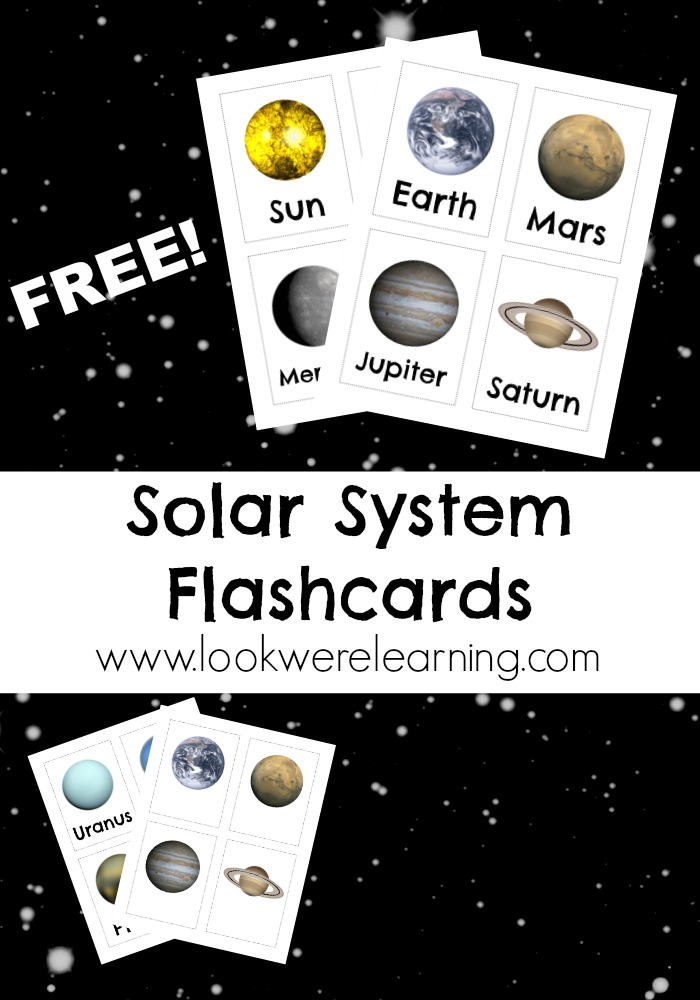When I was a kid, I wanted to be an astronaut. Like pretty much every kid in the 80s.
We’re from Florida originally and I really, really, really wanted to go to space camp.
But, alas, it never happened. I did ride one of those anti-gravity swings at Church Street Station in Orlando, though. Not quite the same somehow.
Outer space is still a fun early learning theme for kids, so I thought I’d put together a few resources for learning the solar system.
There are videos, books, and activities below that make learning about the solar system even more fun!
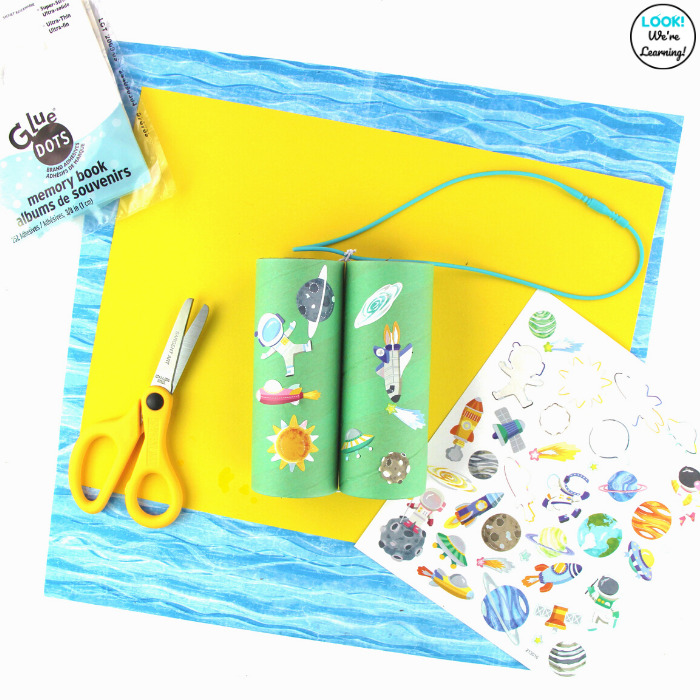
You can use some or all of these solar system unit resources to introduce your students to our neighbor planets.
If you like this unit, take a look at our Spanish and English Solar System Learning Cards too!
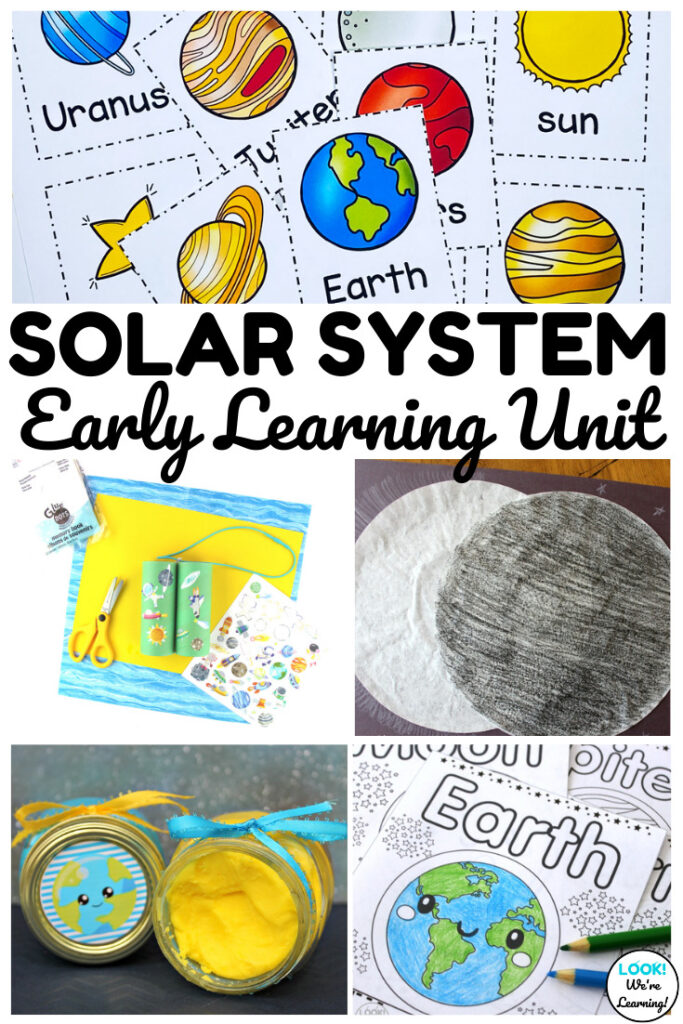
Learning the Solar System for Kids
Watch the following YouTube video and discuss the following questions with your class:
(Note: The last two minutes of this video includes a hypothesis that states the solar system will cease to exist in 500 million years, which might frighten some students. Giving you a heads-up in case you want to skip it. None of the questions below are about that part of the video.)
- How old do scientists think the solar system is? Answer: 4.5 billion years old
- How often does the solar system circle the galactic center? Answer: Once every 250 million years
- Name the four terrestrial planets in our solar system: Answer: Mercury, Venus, Earth, Mars
- Name the four gas giants in our solar system: Answer: Jupiter, Saturn, Uranus, Neptune
- Why does Mercury experience large temperature fluctuations? Answer: Because a Mercury year is shorter than a Mercury day.
- How hot does temperature get on Venus? Answer: Up to 497 degrees Celsius
- Why is Earth able to sustain life? Answer: Because temperatures are moderate enough to retain a water supply.
- Name the largest mountain on Mars: Answer: Olympus Mons (It’s also the largest mountain on any planet in the solar system.)
- What two gases comprise most of Jupiter? Answer: Hydrogen and Helium
- How many moons does Saturn have? Answer: 62
- What makes Uranus unique? Answer: Its axis of rotation is tilted sideways.
- How long is a Neptune year? Answer: 164 Earth years
- How much of the solar system’s mass is made up by the sun? Answer: 99.86%
- Where is Pluto located? Answer: In the Kuiper Belt at the edge of the solar system
Solar System Outer Space Binoculars Craft
Make a simple solar system craft with this outer space binoculars activity!
Little learners can use them to “stargaze” on their own!
Supplies: (Affiliate links are listed below. For details, see our Disclosure Policy.)
- Two empty toilet paper rolls
- Colored tissue paper
- Child-safe scissors
- Glue stick
- Elastic cord
- Stretch rubber necklaces
- Outer space-themed stickers
- Glue circles
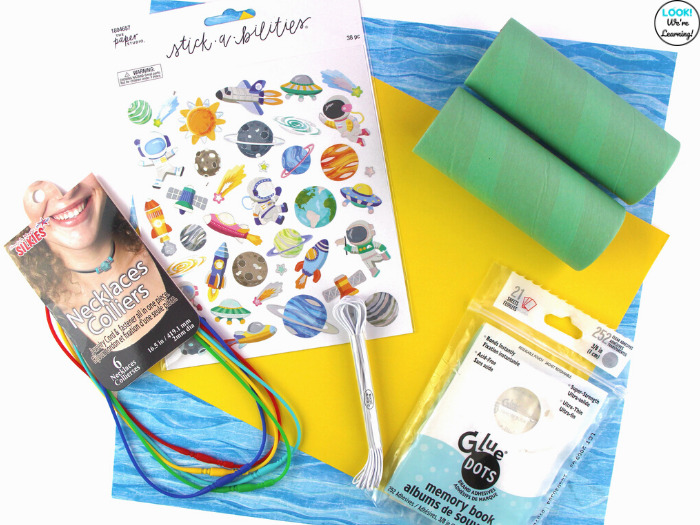
Wrap the tissue paper around each toilet paper roll. Use scissors to cut off the excess.
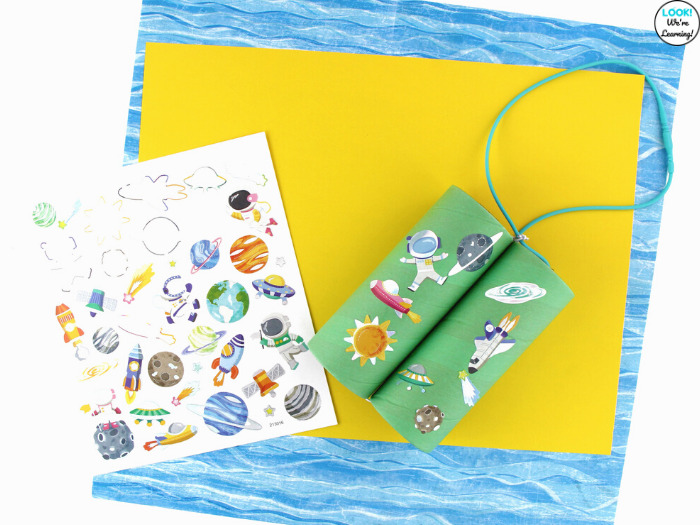
Stick glue circles onto the side of one of the toilet rolls. Press the other roll onto it to stick them together.
Let students decorate the tubes with the outer space stickers.
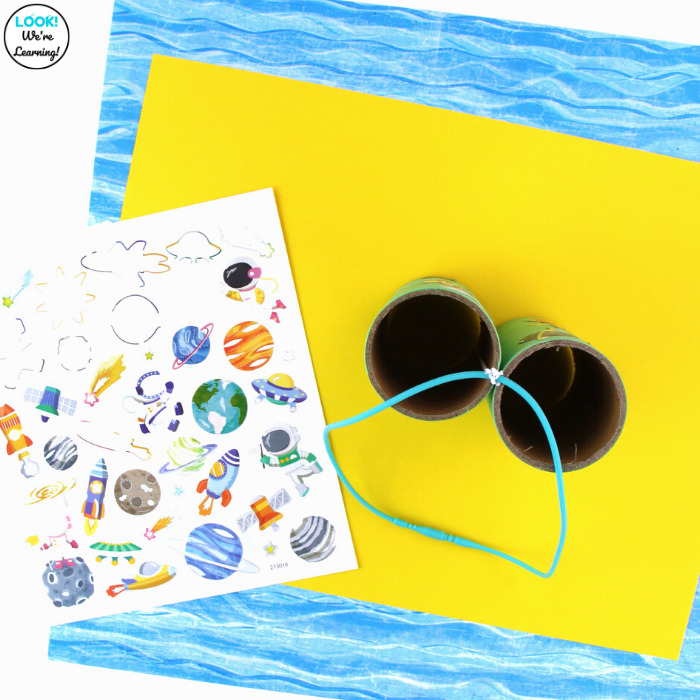
Cut the elastic cord and thread it inside both of the paper rolls.
Tie the ends of the cord around the rubber necklace to make a lanyard.
All done!
Solar System Flashcards for Kids
Teach your students about each member of the solar system, including the sun, moon, and stars, with these printable solar system flashcards!
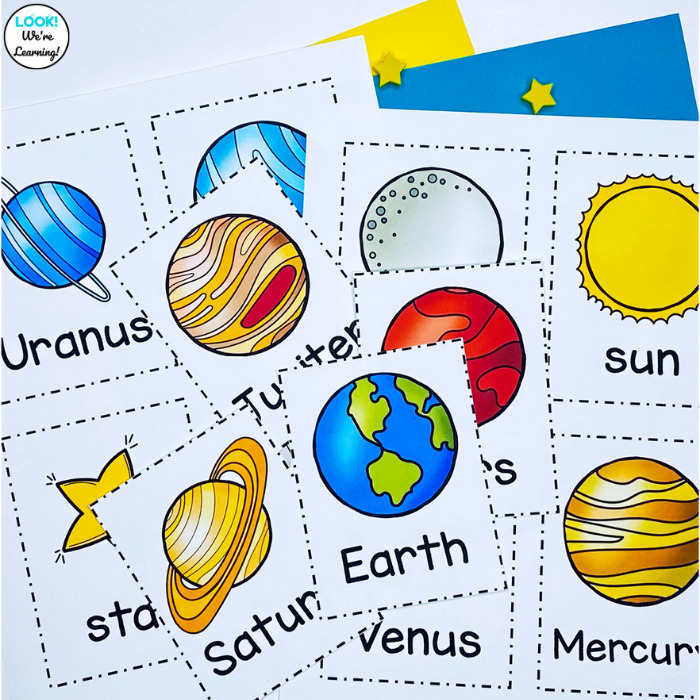
These cards feature colorful illustrations and vocabulary words for early learners to memorize the planets in our solar system.
A full blackline version is included too.
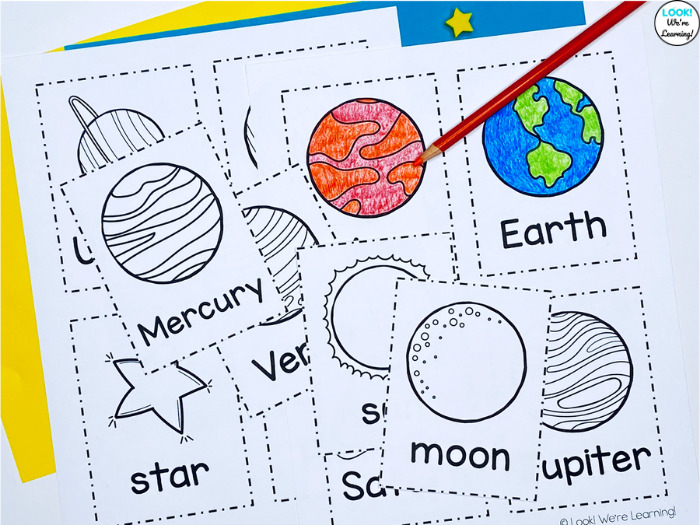
Best of all – you can get these solar system printables for free!
Click the image or the link below to have these solar system flashcards sent directly to your inbox! You’ll also get our weekly newsletter – coming this Sunday!
>>> Solar System Flashcards <<<
25 Books about the Solar System:
There are so many great picture books about the solar system for kids to read. Many of them have beautiful illustrations and, sometimes, even pictures from space.
I’ve put together a list of 25 selections that are excellent for early grades.
Take a look at the collection below!
25 Awesome Books about the Solar System
Solar System Crafts and Activities for Kids:
Try some of these hands-on ways to learn about the solar system for kids!
- Solar System Edible Playdough – Look! We’re Learning!
- 10 Fun Children’s Books about Space – Crafty Mama in ME
- Children’s Astronaut Books – The Jenny Evolution
- Solar System Coloring Pages – Look! We’re Learning!
- Melted Bead Planet Mobile – Schooling a Monkey
- Stargazing Apps for Kids – iGameMom
- Coffee Filter Solar Eclipse Craft – Look! We’re Learning!
- Space sensory salt tray activities – The Usual Mayhem
- How to Spot Meteors When Camping – FrogMom
I hope you love using this simple solar system unit with your students! If you have any suggestions, feel free to let me know in the comments!

